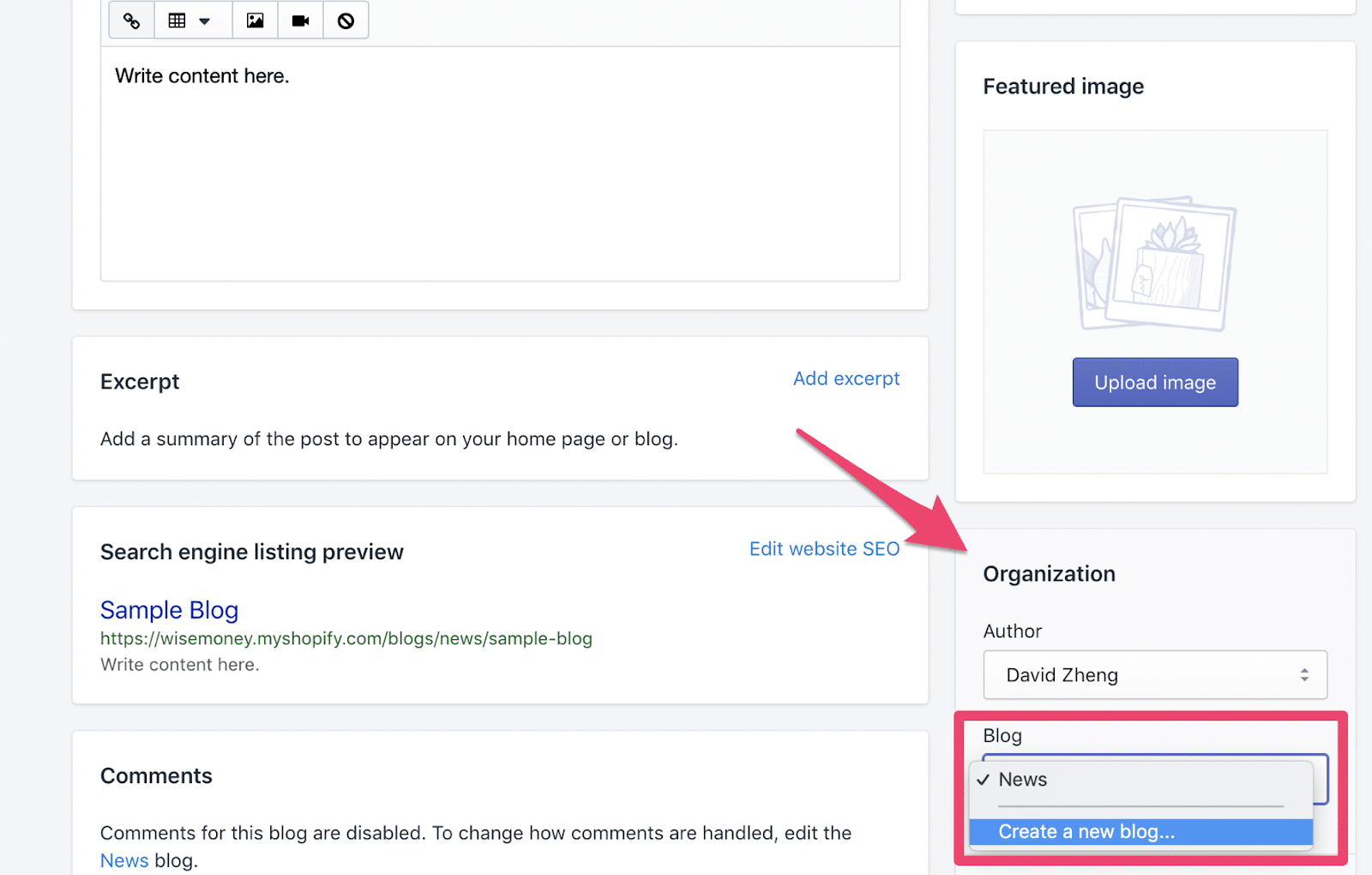Blogs are a great feature for all websites, including online stores. Blogging is one of the best ways to drive traffic to your website and improve your SEO strategy as well.
Your blog can also be to increase user engagement on the website. Blog posts also act as a lead generation tool. When done correctly, your blogs can ultimately drive conversions by turning your website traffic into paying customers.
So if you’re ready to start blogging, I’ll teach you how to add a blog to your Shopify store.
Step #1: Click “Online Store” from your Shopify admin page.
Step #2: Navigate to “Blog posts” from the expanded menu.
Step #3: Create a new blog post.


Step #4: Add a blog title.
Step #5: Write your content and save the changes.


By default, every Shopify store has a default blog called “News.” Any new blog post that you publish will appear on this page.
However, you can create a new blog page with a different title by clicking “Create New Blog” under the “Organization” menu.


Aside from writing the actual blog content itself, you can add a blog to your Shopify store in minutes. The process is extremely easy and can be completed by following the five-step process that I’ve outlined in this tutorial.
Tips for Creating a Successful Blog on your Shopify Store
- Identify your target audience
To create a successful blog, it’s essential to identify your target audience and create content that caters to their needs and interests. You can use tools like Google Analytics to understand your audience’s demographics, interests, and behavior on your website. Once you have a clear understanding of your target audience, you can create content that addresses their pain points, provides solutions to their problems, and offers value to them.
- Stick to a consistent schedule
It’s important to determine your blogging frequency and stick to a consistent schedule to keep your audience engaged. Your blogging frequency will depend on your business needs and your target audience’s preferences. Some businesses may choose to post daily, while others may post weekly or monthly. Regardless of your frequency, it’s important to stick to a consistent schedule to keep your audience engaged and to build a loyal following.
- Optimize your blog posts for search engines
To increase your blog’s visibility and ranking on search engines, it’s important to optimize your blog posts for search engines. This can be done by incorporating relevant keywords, meta descriptions, and alt tags for images. You can use tools like Google AdWords Keyword Planner to identify relevant keywords that your target audience is searching for and incorporate them into your blog posts.
- Make your content visually appealing and easy to read
To make your blog posts more visually appealing and easier to read, it’s important to use catchy headlines and subheadings. This will help to break up your content and make it more scannable for your readers. Additionally, you can use formatting elements like bullet points, bolded text, and italics to highlight important information and make your blog posts more engaging.
- Make your content engaging and informative.
Incorporating multimedia content like images, videos, and infographics can make your blog posts more engaging and informative. This can help to break up your content and make it more visually appealing for your readers. Additionally, multimedia content can help to reinforce key points and make your content more memorable.
- Use a conversational tone
Using a conversational tone in your writing can make your content more relatable and approachable for your readers. This can help to build a connection with your audience and make your content more engaging. Additionally, using a conversational tone can help to make complex topics more understandable for your readers.
- End your blog posts with a clear call-to-action (CTA)
It’s important to end your blog posts with a clear call-to-action (CTA) that encourages readers to take a specific action. This could be signing up for your newsletter, following you on social media, or making a purchase. By including a CTA, you can help to guide your readers towards taking the next step and building a relationship with them.
- Promote your blog posts
Promoting your blog posts on social media platforms is a great way to increase your reach and drive traffic to your website. You can share your blog posts on platforms like Facebook, Twitter, and Instagram, and use hashtags to increase their visibility. Additionally, you can engage with your audience on social media by responding to comments and feedback and building relationships with.
Conclusion
In conclusion, adding a blog to your Shopify store can be a great way to drive traffic, increase user engagement, and generate leads. By following the tips outlined above, you can create a successful blog that caters to your target audience’s needs and interests, optimizes for search engines, and promotes engagement with your brand. With the right strategy, your blog can become a powerful tool for building brand authority, increasing conversions, and growing your business.
So, if you haven’t already, it’s time to add your blog to your Shopify store! By following the simple steps outlined in this tutorial and implementing the tips above, you can create engaging and informative content that attracts your target audience, improves your SEO strategy, and ultimately drives conversions. Don’t miss out on the opportunity to establish yourself as an authority in your niche and build a loyal following – add your blog today and start reaping the benefits.

Comments